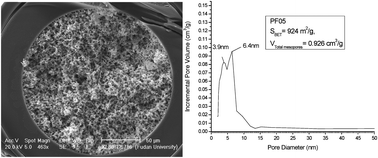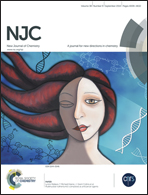Preparation of a high specific surface area monolithic silica reversed phase chromatography column using a template induced method
Abstract
In this study we report a new method for the synthesis of a silica monolithic reverse phase chromatography column. Instead of the usual base corrosion method a template induced synthesis method was used to create bimodal pores in the column bed. Block polymer Pluronic F127 was used as a dual-function template to form a hierarchically porous silica monolith with both macropores and mesopores. Poly(ethylene glycol) was used in combination with F127 to effectively control the mesopore size distribution and the volume shrinkage during the gelation step. The resultant material showed a much narrower mesopore size distribution (centered at 6 nm) than that using F127 as the only template reagent. The surface of the silica monolithic column bed was modified in situ by the C18 reagent, and was then evaluated by a μ-HPLC method. A large number of theoretical plates were observed (>110 000/m) indicating that the new synthesis method creates a monolithic material that can act as a chromatographically efficient stationary phase. The method also makes the fabrication of the silica monolithic column (especially capillary columns) much simpler.


 Please wait while we load your content...
Please wait while we load your content...